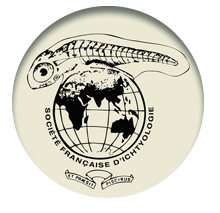Foraging habitat and performances of King penguins Aptenodytes patagonicus Miller, 1778 at Kerguelen islands in relation to climatic variability
How to cite: Bost, C.-A., Goarant, A., Scheffer, A., Koubbi, P., Duhamel, G., & Charrassin, J.-B. (2011). Foraging habitat and performances of King penguins Aptenodytes patagonicus Miller, 1778 at Kerguelen islands in relation to climatic variability. Cybium, 35(SP): 199-202. https://doi.org/10.26028/CYBIUM/2011-35SP-023
Understanding how climate change affects the foraging ecology of key marine predators is an important issue in the study of Southern Ocean food webs. Since 1998, we have conducted a long term research program on the foraging ecology of a top-diving predator, the King penguin Aptenodytes patagonicus, simultaneously at Kerguelen and Crozet Islands with the support of the IPEV (Institut Polaire Français). King penguin is one of the most important predatory birds at Kerguelen. In summer, they forage preferentially along large-scale physical features and use the three dimensions of hydrographic features to feed on myctophid fishes (the penguins’ main prey and a major prey species in the Southern Ocean). Primarily, this study aims to evaluate how the change in foraging parameters and success of penguins reflect the impact of oceanographic conditions on key food webs in the polar frontal zone. Each summer, breeding (incubation and brooding) penguins from the Ratmanoff colony (Courbet Peninsula, Kerguelen; 100 000 pairs) are instrumented with Argos transmitters or GPS with time-temperature-depth recorders. Here we provide a first modelling approach to the King penguin’s foraging habitat during summer from static variables (bathymetry), dynamic variables (SSHt, SST, Chlorophyll) and their related trends (gradients). In addition, trawl data on the distribution of myctophid fishes have been integrated. The most important factors explaining penguin foraging location are the SSHt, the bathymetry gradient and the SST. Results of interannual change in penguins at-sea trajectories, diving behaviour, foraging success and effort are discussed according to the interannual changes in the hydrographic structure in the Kerguelen region.


